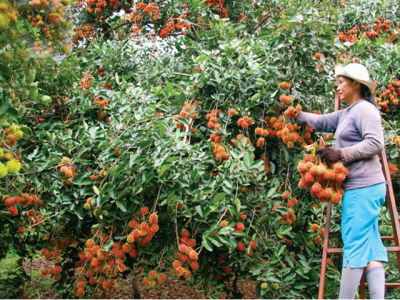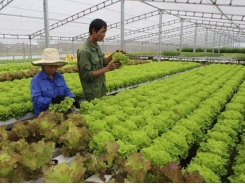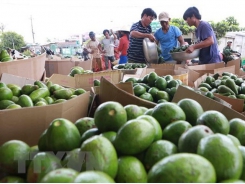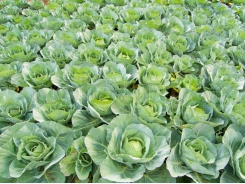Vietnams fruits enter choosy markets

Vietnam fruits have penetrated 60 markets as food safety standards have improved in recent years.
Vietnam's fruits have penetrated 60 markets
According to the Ministry of Agriculture and Rural Development (MARD), after many years of negotiation, Vietnam has overcome technical barriers to enter choosy markets including Australia, the US, New Zealand, Japan and South Korea.
By April 2018, Vietnam had exported over $1.3 billion worth of fruits, an increase of 30 percent over the same period last year.
In 2017, the export turnover from fruits was $3.5 billion, nearly twice as much as 2016 ($1.7 billion). The figure is expected to reach $4.3-4.5 billion this year.
Vietnam is able to meet strict requirements set by import countries on origin tracing. The efficiency of trade promotion, branding and the connection between farmers and exporters is also very good.
According to Hoang Trung, head of the Plant Protection Agency, it took Vietnam seven years to obtain the right for Vietnam’s rambutan to enter New Zealand market. And only after 10 years of negotiations did the US open its market to Vietnam’s star apple.
To enter choosy markets, Vietnam has to satisfy requirements on food safety, especially in plant protection chemical residue. To date, the Plant Protection Agency has granted 6,000 growing area codes to dragon fruit, mango, longan, rambutan and litchi. MARD is joining forces with enterprises to continue building seven processing plants with regional stature.
Trump said there are three major requirements for the US market. First, the growing areas must meet requirements or the US to authorize MARD to grant growing area codes. Second, the packaging factories must be granted codes by the US. And third, export products must be radiated at factories that meet standards.
Vo Quan Huy, director of Huy Long An, which grows and exports bananas to Japan, confirmed that to enter the Japanese market, the company has to meet many strict requirements, from soil conditions to seedling selection, from cropping to harvesting, from product size to packaging in containers.
Farmers need to take care of every banana, so that they have equal size and quality. Each bunch must not have too many bananas to ensure quality and appearance.
Huy said that, before signing contracts, Japan sent staff to growing areas to take soil, water and air samples for testing of 230 criteria.
Vietnam exported $3.51 billion worth of vegetable and fruit exports in 2017, of which fresh fruits made up 75 percent, or $2.63 billion.
Related news
Tools

Phối trộn thức ăn chăn nuôi

Pha dung dịch thủy canh

Định mức cho tôm ăn

Phối trộn phân bón NPK

Xác định tỷ lệ tôm sống

Chuyển đổi đơn vị phân bón

Xác định công suất sục khí

Chuyển đổi đơn vị tôm

Tính diện tích nhà kính

Tính thể tích ao




 Vietnam cashew industry: the more exports, the bigger…
Vietnam cashew industry: the more exports, the bigger…  Keeping cabbages clear of pests and diseases
Keeping cabbages clear of pests and diseases